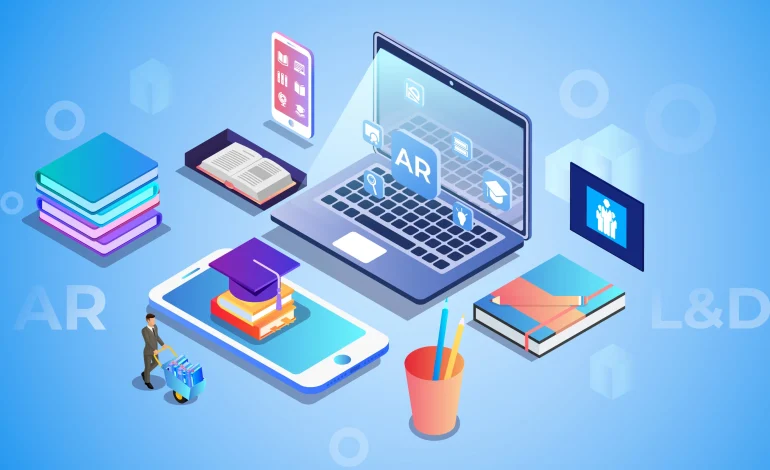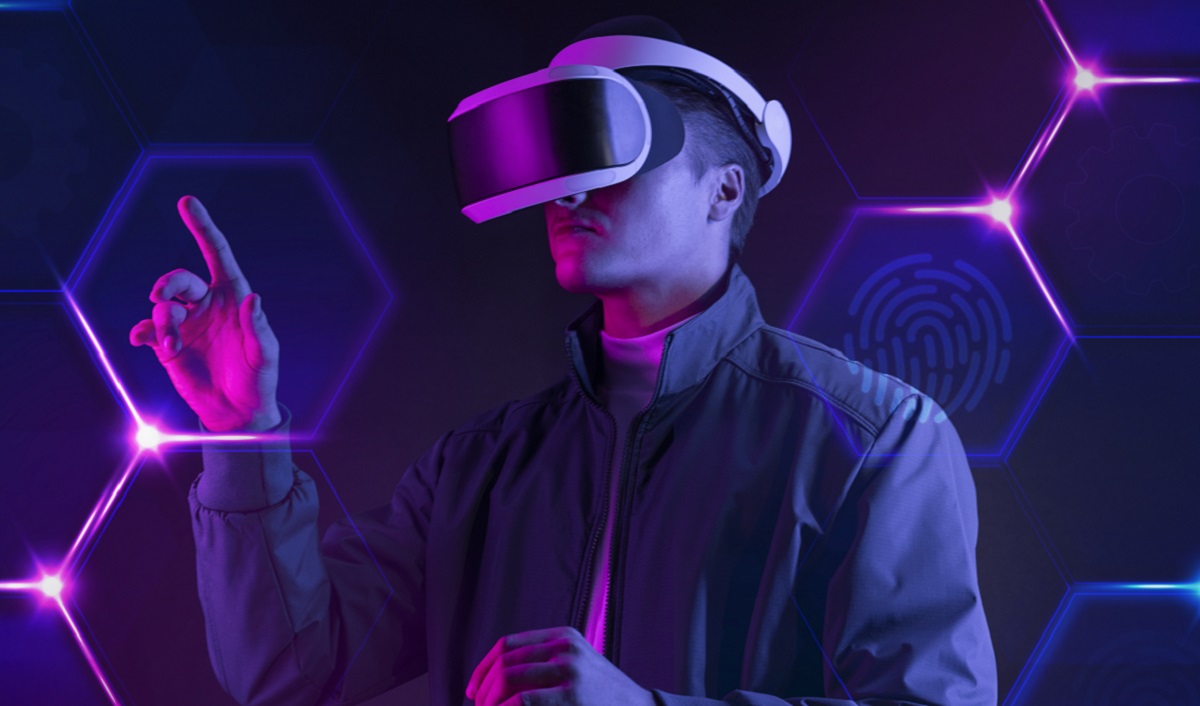Educating the Future: The Role of AR in Learning and Development

The rise of technology has revolutionized how we learn and develop new skills. Augmented reality (AR) development is the latest technology to enter the world of education, allowing for immersive learning experiences and virtual simulations. AR development is quickly becoming famous for students and professionals to learn and gain new skills more interactively and engagingly. In this blog post, we’ll discuss the role of AR in learning and development and how it can be used to educate the future.
Introduction
As technology continues to evolve, so does the way we approach education. Traditional classroom teaching methods slowly advance to modern technologies that offer more interactive and immersive learning experiences. One of the most promising technologies that are transforming the way we learn is Augmented Reality (AR). Augmented Reality overlays digital content in the real world, enhancing the user’s sensory perception and making learning more engaging and interactive. In this blog post, we will explore the role of AR in education and how it is changing the way we educate the future generation.
Importance of AR in education

Augmented Reality (AR) technology has become increasingly popular in various fields, including education. AR involves enhancing real-world environments with computer-generated information, which allows students to interact with virtual objects and scenarios. This technology is revolutionizing education by making learning more immersive and engaging. Here are some of the reasons why AR is important in education:
- Promotes Active Learning:
Traditional teaching methods often involve students being passive receivers of information. However, with AR, students can become active learners as they interact with digital content and use it to solve problems and complete tasks. This promotes a more profound understanding and retention of information.
- Enhances Engagement:
AR provides a more engaging learning experience that captivates students’ attention. Learning with AR is more enjoyable, and students are more likely to remain focused and motivated throughout the learning process.
- Offers Flexibility:
AR provides Flexibility in learning. Students can learn at their own pace and in their way, making learning more personalized and effective. Also, AR allows students to access learning material anytime and anywhere, using smartphones or other devices.
- Facilitates Collaborative Learning:
AR allows students to work collaboratively on projects, creating a sense of community and fostering teamwork. This creates an environment for students to share ideas, develop social skills, and learn from each other.
Overall, AR has the potential to enhance learning and development in a range of educational settings. It allows students to explore and interact with subjects in a way impossible with traditional teaching methods. The following section will explore how AR is used in various educational settings.
How is AR being used in various educational settings?
Augmented Reality has rapidly emerged as an innovative and efficient tool for transforming education. Many educational institutions worldwide have incorporated AR into their curriculum to enhance student learning experiences. In this section, we will explore how A.R. is used in different educational settings.
One of the primary uses of AR in education is to create interactive and immersive learning environments. For instance, AR can be used in science classes to provide students with a virtual lab to conduct experiments without needing expensive equipment. Similarly, AR can also be used to create simulations and virtual field trips that allow students to explore places they might not have been able to visit in person.
AR can also be used to enhance the effectiveness of traditional classroom teaching. For example, teachers can use AR-enabled textbooks to make the content more engaging and interactive. By scanning pages with a smartphone or tablet, students can access additional information, 3D models, and animations that can help them better understand the topic.
Moreover, AR can provide personalized learning experiences to students with different learning styles and abilities. For instance, AR-enabled apps can adapt to the pace and preferences of individual students, making learning more effective and efficient.
In higher education, AR is being used to provide medical students with simulated surgeries to help them prepare for real-life operations. This provides a more realistic experience for students and helps minimize the risk of errors during actual surgeries.
Overall, AR is an effective and efficient tool for transforming education. It can potentially revolutionize learning, making it more engaging, interactive, and effective. As technology continues to evolve, we can expect to see more innovative uses of AR in education in the years to come.
Benefits of AR in education

While the use of AR in education is still in its infancy, the benefits are already apparent. Here are just a few of the benefits of using AR in the classroom:
- Increased student engagement: AR brings a new level of attention to the classroom by making learning interactive and immersive. When students are engaged, they are more likely to remember the material and stay motivated.
- Improved retention: Studies have shown that AR can improve the retention of information. AR provides a more interactive and memorable learning experience than traditional methods.
- Better visualization of complex concepts: AR can create interactive 3D models of complex concepts, such as the human body or scientific processes. This allows students to understand the concepts better and see how they work in the real world.
- Personalized learning: AR can create personalized learning experiences for students based on their needs and learning styles.
- Increased accessibility: AR can be used to create learning experiences that are accessible to all students, including those with disabilities.
Overall, AR has the potential to revolutionize the way we learn and teach. As more educators begin to explore the possibilities of AR in education, we can expect to see even more benefits emerge.
Future Possibilities for AR in Education
As the world of technology continues to evolve, so does the potential for AR in education. One exciting possibility is the integration of AR into online learning platforms. With AR, students can experience a more immersive and interactive learning environment, making it easier to retain information and understand complex concepts. This could revolutionize students’ learning, making it more accessible and engaging.
Another exciting possibility for AR in education is using augmented reality glasses. These glasses allow students to view digital information overlaid onto their surroundings in real-time, allowing for even more immersive experiences. Imagine studying biology and seeing the human body’s internal workings right before your eyes!
AR could also have a significant impact on practical skills-based education. Imagine training for a trade such as plumbing and viewing a 3D model of a complex system and seeing how all the parts fit together rather than trying to decipher a complicated manual. This could revolutionize vocational training and make it more accessible for people from all walks of life.
Overall, the future possibilities for AR in education are vast and exciting. As technology continues to evolve, so too will the potential for AR to enhance and transform the way we learn. As educators and learners alike, it’s essential to stay abreast of these developments and embrace the many benefits that AR can offer us.
Conclusion
In conclusion, AR technology has shown immense potential to transform the way we learn and develop. It provides an interactive and engaging platform for students to explore and understand complex concepts intuitively. AR has become an essential tool in many educational settings, from interactive textbooks to virtual field trips. The benefits of AR in education include improved student engagement, retention, and comprehension of complex subjects. As technology continues to evolve, the possibilities for AR in education are endless. With AR, educators can create immersive learning experiences that inspire curiosity and creativity, leading to more profound learning outcomes. In the future, AR will undoubtedly play a critical role in educating the next generation of learners, equipping them with the skills and knowledge they need to thrive in an increasingly digital world.





